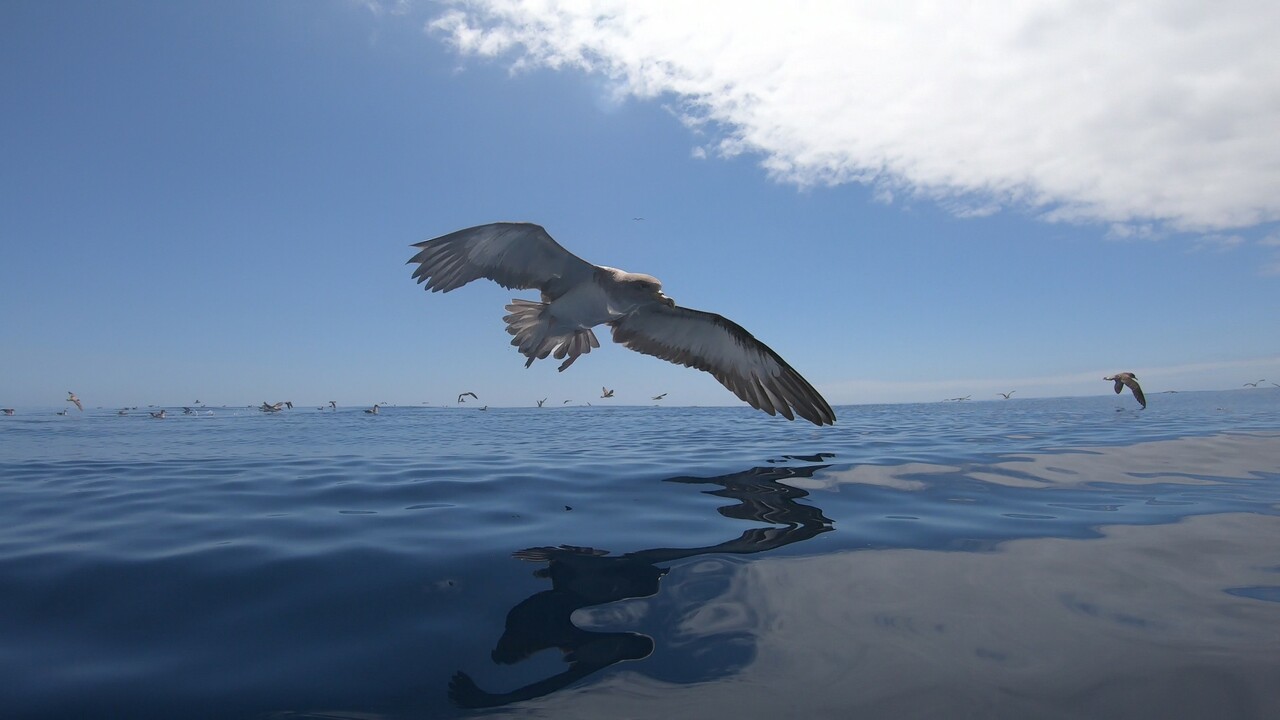When plastics began to be incorporated into our consumer goods, they were heralded as one of mankind’s best inventions. Their versatility meant they could be woven into our clothes, preserve our food, transport us and our goods, and so much more. However, the qualities that made plastics so desirable, have also made them problematic. The majority of plastics that were ever produced still exist to this day, but they don’t function as toys or car parts or packaging anymore. Now they are waste that has fragmented into countless, small pieces that we call microplastics. Because plastics don’t biodegrade in reasonable quantities during our lifespans, they break apart and become smaller and smaller, until you can’t see them with the naked eye. An entire field of research has emerged to investigate these particles and has uncovered microplastics across the globe, in oceans and rivers, in soils, in Arctic ice, on glaciers, in the air, and inside countless wildlife species. They are so ubiquitous that they are an indicator of the Anthropocene, the epoch that we are currently living through and in which human activity has had significant impact on the Earth.
Because of our tight-knit relationship with this material that now envelopes the globe, the question has arisen of its effects on health. Multiple components of health have been investigated, ranging from reproduction to growth rate and gene activity. However, there is a noticeable gap in the research when it comes to considering the gut microbiome as a component of health, which we were particularly interested in.
The gut microbiome is the community of microbes that live inside the gut that evolutionarily formed a symbiotic relationship with its host. These microbes can break down food and provide hosts with access to nutrients that they otherwise would not have, whilst hosts provide a stable home and steady flow of food for their gut residents. The field of microbiome research has also emerged recently and has uncovered many links, some causal and some correlative, between diseases and the gut microbiome. To oversimplify, when the host is healthy, so is the microbial community and vice versa. This led us to wonder what might be happening in the guts of organisms that ingest microplastics throughout their lives.
In our quest to explore this question, we identified seabirds as optimal study organisms because we know from long-term monitoring that they may confuse microplastics floating out at sea with food and ingest these particles, even feeding them to their chicks. It was important to us to have study organisms that ingest microplastics as part of their natural, daily lives, and so we chose the northern fulmar (Fulmarus glacialis) and Cory’s shearwaters (Calonectris borealis). By collecting the microplastics throughout their digestive tracts and sampling their microbial communities in two different parts of the digestive tract (once anteriorly and once posteriorly), we were able to investigate the relationships between microplastics and the gut microbiome.

The northern fulmar, one of our study species and a plastics bioindicator, flying in the Artic. Photo by Julia Baak.
We found that, as the amount of microplastics in the gut increased, so too did the changes in the gut microbiome. However, these changes were not uniform across the digestive tract of the seabirds: we found that microplastics had bigger impacts on the more anterior digestive tract compared to the posterior one, hinting that the effects of microplastics might wane as they travel along in the digestive system. When we dug deeper to find out which microbes specifically were driving these differences, we discovered that microbes which are considered to be part of a normal and healthy gut microbiome in seabirds decreased with increased microplastic ingestion. At the same time, there was an increase in microbes that can be pathogenic, have been identified as potential zoonotic pathogens, and experimentally have been shown to be antibiotic resistant and able to degrade plastics. It’s important to note here that, although we detected these microbes, we can’t say whether or not they were pathogenic in these seabirds, since that is not something we measured.

Humans also ingest, drink, and inhale microplastics. Though there is still question about the quantities that humans ingest, what makes these findings of interest to humans is that there were detectable correlations between gut microbial diversity and composition and microplastics at environmentally-relevant concentrations. Since the seabirds in this study foraged for themselves in their natural habitats and habitat ranges, the effects we detected here reflect what is happening in nature at this current point in time. Moreover, because these seabirds are migratory birds and have large home ranges to forage for food, we expect the results we observed to be indicative of more global patterns of microplastic pollution, meaning that the results should not be swayed by unusually high or low local concentrations of microplastics.
The relationship between gut microbiome and host species is one that evolved over long periods of time. The fact that ingesting a new, manmade material is linked with changes in that symbiotic community should emphasize the breadth of reach that human activity has, not only on wildlife communities, but perhaps also on ourselves.
Banner photo of a Cory's shearwater by Dr. Christopher Pham.







Please sign in or register for FREE
If you are a registered user on Research Communities by Springer Nature, please sign in